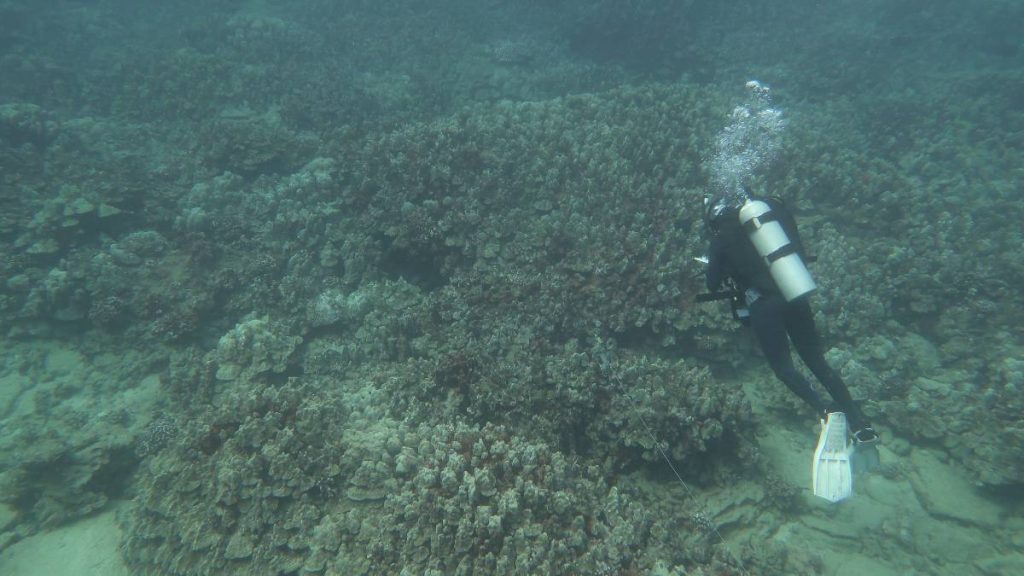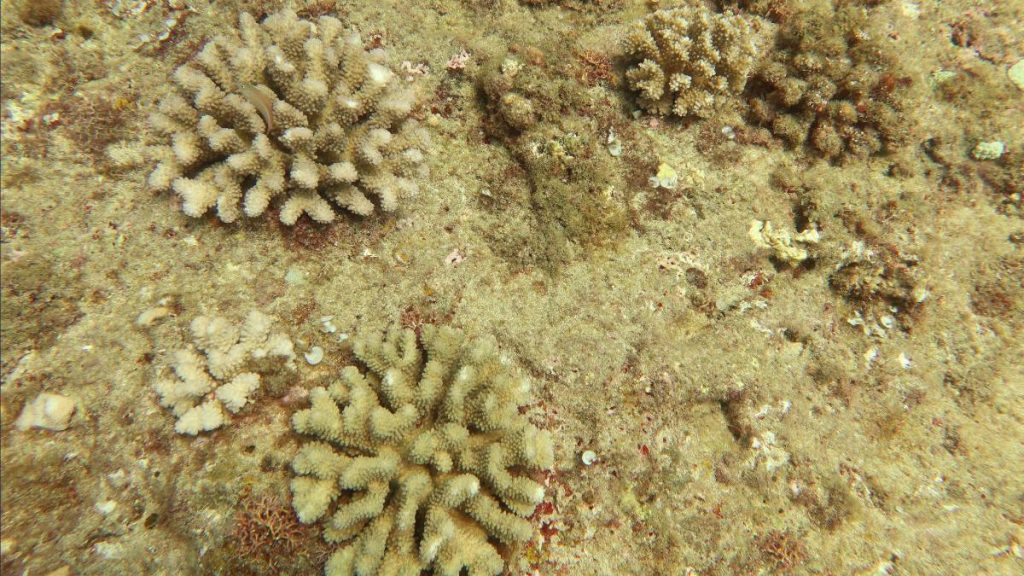‘A huge moment’ for Kaua‘i reefs: Coral nursery coming to island with federal funding
A much-needed facility to protect coral reefs, one of the Hawaiian Islands’ most precious natural resources, will be built on Kaua‘i due to a recently awarded grant of nearly $200,000.
State personnel and conservation partners will construct a $384,400 coral nursery on the Garden Isle using the grant money disbursed under the federal Coral Reef Stewardship Fund and matched by the state of Hawai‘i Department of Land and Natural Resources.
Details and the location of the coral nursery will not be made public until the completion of a state procurement process. But already, excitement is building about the project.

“It’s been a long time coming and it’s been very needed,” said McKenna Allen, a state Division of Aquatic Resources biologist born and raised on Kaua‘i. “This is a huge moment for us … Corals are the basis of our nearshore ecosystems in Hawai‘i.”
Corals build the structures upon which other species spend their lives: About 25% of all marine species are found in, on and around coral reefs, rivaling the biodiversity of tropical rainforests. Thriving coral reefs, in addition to supporting healthy fish populations, also prevent shoreline erosion and billions in annual property damage.
The health of Kaua‘i coral reefs is considered “fair,” a rating on par with that of nearly all other major Hawaiian Islands, according to the latest National Coral Reef Monitoring Program status report for the region. It’s a middling score reflective of reef conditions often seen in populated areas. Although Kaua‘i reefs are doing well in general, they have experienced degradation.
Chief threats to Hawai‘i reefs include pollution caused by sediment and sewage runoff, overfishing and global climate change. A more bizarre danger faced by Kaua‘i Division of Aquatic Resources staff in recent years has been non-native coral likely planted by a local aquarium enthusiast.
Hawai‘i corals provide flood protection to people, property and jobs valued at more than $830 million every year, a representative of The Nature Conservancy said in February, shortly after the global environmental organization purchased an expanded insurance policy to restore the islands’ reefs following storm damage.
“I don’t think a lot of people realize how much the reef protects our shoreline, because it buffers incoming wave energy,” Allen said. “A lot of our homes on Kaua‘i are built along the shoreline … Coral reefs help to support that infrastructure, among many other things, including tourism and our enjoyment of the ocean.”
Coral reefs contribute more than $1.2 billion through reef-related tourism to the state of Hawai‘i economy, and are worth an estimated $33.57 billion in total economic value to the American people, according to the National Oceanic and Atmospheric Administration.
Their worth also transcends mere monetary value: The Kumulipo, a foundational Hawaiian creation chant, lists the coral polyp as the first living organism created alongside the first man and woman.
The coral nursery project is expected to begin in January, according to Allen, who claimed it will likely resemble the Hawaiʻi Coral Restoration Nursery at the Division of Aquatic Resources’s Ānuenue Fisheries Research Center on Sand Island in Honolulu. There, corals collected from the sea are placed in quarantine and acclimatization tanks before they are set in a “grow-out raceway,” a large seawater tank where corals grow over concrete pyramids called modules.
On O‘ahu, corals are collected from harbor pilings and walls, where they are deemed to have little ecological value. A diamond-blade saw is used to cut a given coral into “microfragments,” which are then glued over the surface of a concrete pyramid. The process exponentially increases the coral’s surface area to volume ratio, creating many more freshly-exposed edges from which new growth can occur.
“They start to touch each other,” Allen said of growing microfragments. “Because they’re the same coral individual, the tissue … will start to fuse.”
The Sand Island nursery’s process sees corals initially the size of fists expand to cover the area of a laptop over the course of one to two years – much faster than the growth rate of wild Hawai‘i corals, which possess an average growth rate of one to two centimeters per year.
There is more to coral polyps, the creatures that create coral reefs, than may meet the eye.
“Is a coral a rock, an animal or an algae?” Allen said. “The answer to that trick question is, it’s all three.”
Corals are made up of individual polyps, small animals with stomachs surrounded by tentacles used to capture food, clear debris and provide defense. Algae belonging to the genus Symbiodinium live within the polyps’ tissues, feeding the polyps with products of photosynthesis. The polyps ultimately secrete calcium carbonate structures that provide them with their distinctive rocklike forms.
The reefs of Kaua‘i feature less coral cover than those of other major Hawaiian Islands yet are still home to a great number of coral species. Dominant varieties include various species of cauliflower, antler, lobe, mounding and rice corals.
The 2024 round of the Coral Reef Stewardship Fund, administered by the National Fish and Wildlife Foundation and NOAA, awarded nine grants totaling $2 million.
In addition to the Kaua‘i coral nursery project, recipients include initiatives based in Florida, American Samoa, Puerto Rico and elsewhere in Hawai‘i. The Maui Ocean Center Marine Institute will address coral reef disturbances caused by vessel groundings, while the University of Hawai‘i will spend its funds on multiple projects related to invasive species and coral disease.











